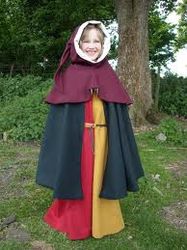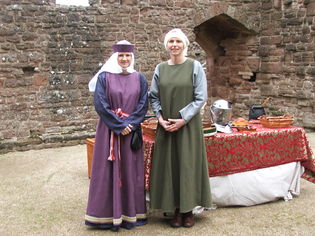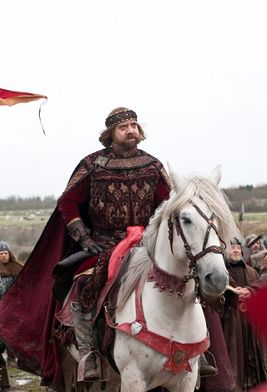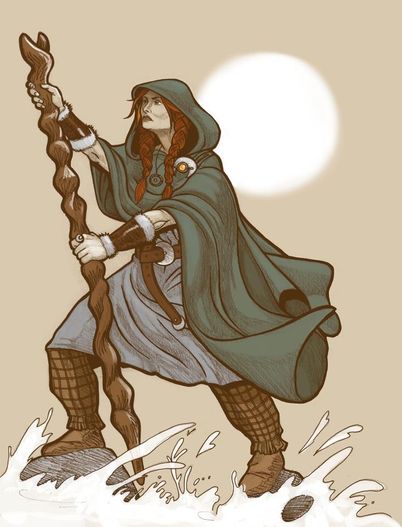The Marches look and feel
(→Hats) |
m (→Weapons: typo) |
||
| Line 58: | Line 58: | ||
===Weapons=== | ===Weapons=== | ||
Bows are common. In hand-to-hand combat Marchers favour bills and other pole-arms. Two handed swords are common for richer | Bows are common. In hand-to-hand combat Marchers favour bills and other pole-arms. Two handed swords are common for richer characters in heavier armour, as well as warhammers, maces or poleaxes. Any historical weapons from the Hundred Years War and the War of the Roses are good: poleaxes, bills and other polearms are iconic; warhammers, bollock daggers, axes, falchions, mauls, and improvised weapons based on farm equipment are all welcome. | ||
<row-fluid> | <row-fluid> | ||
Revision as of 13:55, 21 September 2012
Overview
The Marches draws strongly on English history from the 12th century through to the War of the Roses for costume, weaponry and armour.
The costume of the Marches has a 'solidity' to it, a worn, lived-in look that contrasts with its neighbour Dawn's high romance, gleaming plate and vivid hues. The Marches is Kenneth Brannagh’s Henry V rather than Laurence Olivier’s.
Also see Marches costumes and Marches icons and artistry.
Breakdown
Feel
Gritty, solid, practical, traditional, mud, blood, green fields, rural, iron.
Influences
Wars of the Roses England, Rangers of Ithilien (Beaters), Cadfael (Monks and Landskeepers).
Materials
Wool, calico, linen, leather.
Colours
Plain flat colours, mostly the soft colours of natural dyes or unbleached cloth. The palette is autumnal suggesting natural dull blues, greys, browns/ rusts, mustards and greens, dull reds etc. especially at the lower end of the social scale. Wealthier Marchers may use deeper, brighter shades.
Clothing
Marchers favour plain clothes, simple hoods, hose and shirts. Wealthier characters might wear finer robes, cotehardies or a simple doublet but it will be still be a plain wool or heavy linen. Headwear is common, either a simple cap, or something like a hood and liripipe or plain chaperon.
Instead of shirts and hose women may choose to wear a woollen or heavy linen overdress such as a kirtle or cotehardie over a shift. The look is long, lean and smooth and laced to fit. Back lacing shows higher status and gives a better line. Side lacing is more usual. Tudor style kirtles with a gathered skirt are not suitable for the Marches.
Hose, either joined or split, are acceptable worn with braies and a long shirt. Shirts are an extremely simple untailored cut, full in the body and sleeve, possibly gathered at neck and wrist.
Doublets are common but should be short and simple, not the fancy slashed doublets of the Tudor period and later. Cotes are generally woollen (or linen in summer) and come down to somewhere between mid-thigh and the knee. Livery coats in the household colours are often worn over armour.
Marchers have no pockets so a pouch is invaluable – bollock or kidney pouches or leather bags are perfect. Belts are often very long, wrapped round, looped at the front and left to dangle.
Both male and female monks wear traditional plain monk's habit either in dark colours, or white with a dark scapular.
Armour
Padded gambesons or leather jacks are common for the poor, with a harness of plate for richer individuals. Households often wear matching livery cotes, although simple sashes or badges are also used to denote afiliation.
Shields
Shields are uncommon in the Marches; the most common are small metal bucklers when they are used at all.
Weapons
Bows are common. In hand-to-hand combat Marchers favour bills and other pole-arms. Two handed swords are common for richer characters in heavier armour, as well as warhammers, maces or poleaxes. Any historical weapons from the Hundred Years War and the War of the Roses are good: poleaxes, bills and other polearms are iconic; warhammers, bollock daggers, axes, falchions, mauls, and improvised weapons based on farm equipment are all welcome.
Marcher costume
Marcher costume is in natural autumnal colours using plain fabrics like wool, calico and linen.
Woollen gowns may be worn – either with a neck opening or opening all the way down the front in coat style. They are usually long, anywhere between knee length and full length and can be worn over a doublet or dress.
Belts are often very long, wrapped round, looped at the front and left to dangle. For women an overdress like a kirtle or cotehardie gives a lean, smooth look.
Hats
Headwear is common, either a simple cap, or something like a hood and liripipe or chaperon.
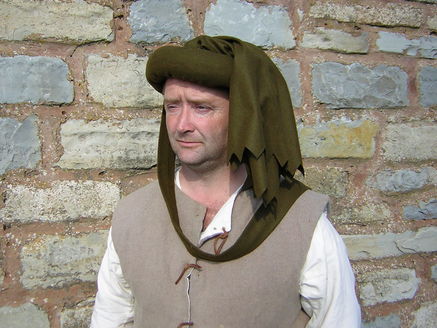
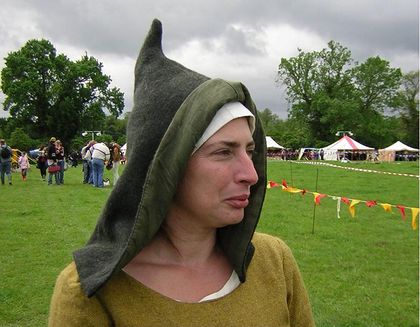
Doublet and hose
Doublets are common in the Marches, a snug-fitting buttoned jacket that is shaped and fitted to the body. It can be worn over the shirt or under another layer of clothing such as a gown. Marcher doublets should be appropriate for the period and feel of the Nation. They are in simple autumnal colours. The fancy doublets that appear later in history, particularly anything with slashed sleeves or similar should be avoided for the Marches.
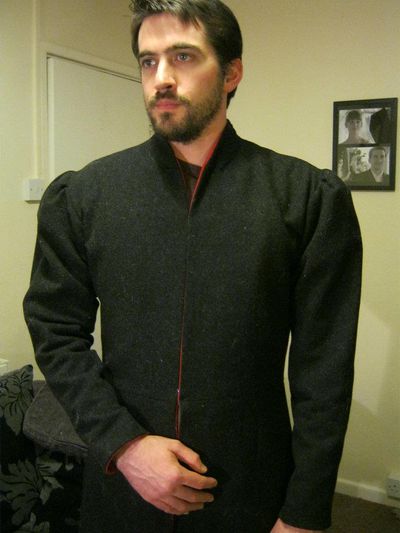
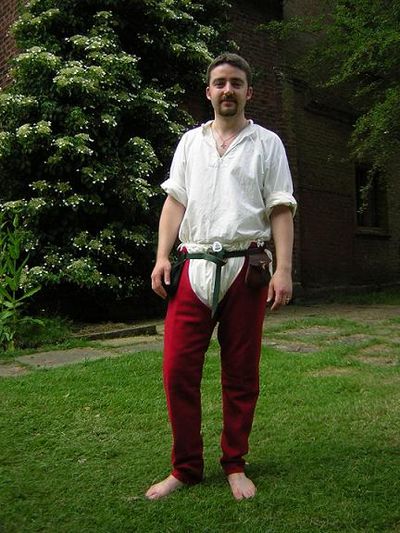
Hose, either joined or split, are worn with braies and a long shirt. Shirts are an extremely simple untailored cut, full in the body and sleeve, possibly gathered at neck and wrist.
Marcher household
A prosperous Marcher household will wear often wear matching livery coats, although simple sashes or badges are also used to denote afiliation. Padded jacks are common for the poor with a plain harness of plate for wealthier individuals.
Yeomen
Poor Yeomen may wear just a plain coloured jack or padded gambeson as their only armour. Wealthier Yeomen have livery coats in their Household colours and mail or plate over the top if they have it.
Stewards
The head of a household, a steward, may wear richer colours, but wool not silk. Wealthy Marcher characters wear a full harness of plate in battle if they have it.
Beaters
Beaters are skilled trackers and gamekeepers. They watch the borders of the Marches. They are inspired by the classic British archers of the period mixed with the Rangers of Ithilien from Lord of the Rings.
Beaters usually wear lighter armour, either just a padded or leather jack or else a leather tunic like the ones worn by the Rangers in Lord of the Rings.
Monks and friars
Monks and friars wear similar robes. A simple brown cassock is acceptable but it can also be black or grey. A more complex arrangement with dark scapular over white undergarments is also excellent.
Landskeepers
Some landskeepers wear robes, similar to the monk, but a jerkin, shirt and hose, with rolled-up sleeves is just as good an alternative. A landkeeper is well used to hard word in the fields and their look reflects that.
Marcher children
